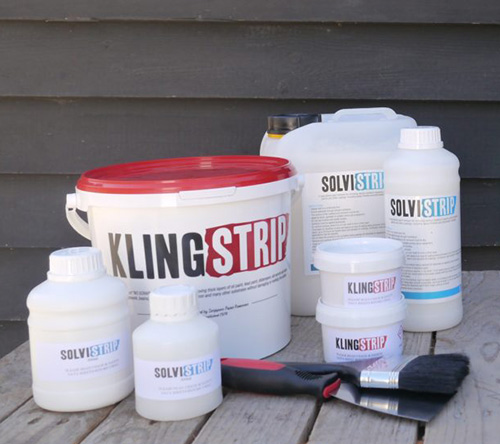Removing paint or other coatings from timber beams
For thick layers of indeterminate black coatings which have obviously been there for years, for gloss paints or other oil-bound coatings and some emulsion paints, Kling Strip will give excellent results. It was for precisely this job that we first produced Kling Strip over 39 years ago!
For polyurethane varnishes or other coatings etc Solvistrip can be effective.It is well worth trying both Kling Strip and Solvistrip. In particular circumstances one will be more effective or easier to use than the other. Trial packs of all our products are available from our online shop.
Tip
Whitewashed beams (i.e. whitewash, not limewash) do not need any sort of paint remover: whitewash is water-soluble, it will come off very easily with a scrubbing brush, water and a sponge. We have often seen builders spending frustrating hours with a wire brush trying to clean beams exposed in renovation work. The wood is dusty and dirty; it needs a good wash. An ordinary scrubbing brush, water and a sponge will do a much better job in a fraction of the time and, unlike a wire brush, don’t leave scratch marks in the timber!
How Long Will the Job Take?
For the average beamed ceiling with, say, a central beam with 12-14 joists on either side, the work on each joist, applying and washing off, will take approximately 1 hour’s work from start to completely paint-free finish.
Will the Process Darken the Wood?
After washing off the dissolved paint, give the wood time to dry to allow its true colour to show. Medieval timbers are not generally darkened, although the colour of any timber may be altered by any paint-removal process. Old beams may naturally be any colour from grey to almost black. Often the colour of the wood can be lightened considerably with our Woodbleach. The basic rule applies: do a test on a small area first with a trial pack available from our online shop.

